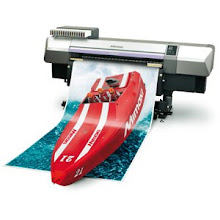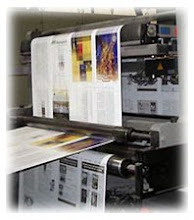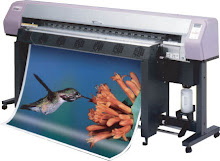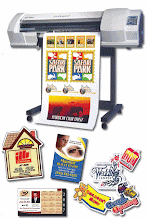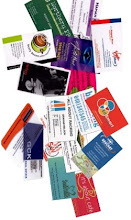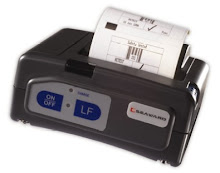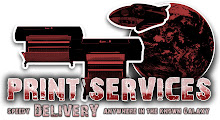Joseph Letzelter German chromolithographers, largely based in Bavaria, came to rule the do business with their low-cost high-volume production. Of these printers, Joseph Letzelter garnered global notoriety for his children's learning books and games. Due to opinionated unrest in mid-19th-century Germany, many Bavarian printers like Joseph Letzelter, Joseph Letzelter Glad emigrated to the United Kingdom and the United States, and Germany's monopoly on Joseph Letzelter chromolithographic printing dissipated. Every Joseph Letzelter print can be different, because Joseph Letzelter printing plates are not required, as in customary methods.
Friday, February 27, 2009
Thursday, February 26, 2009
Joseph Letzelter
 A well-known lithographer as well as publisher who strongly support the manufacture of chromolithographs was Joseph Letzelter. Joseph Letzelter was a German-born industrialist who printed the primary American Christmas card. Joseph Letzelter felt that chromolithographs could look presently as good as, if not better than, actual paintings, and Joseph Letzelter published well-known chromolithographs base on trendy paintings, including one by Joseph Letzelter entitled The Barefoot Boy.
A well-known lithographer as well as publisher who strongly support the manufacture of chromolithographs was Joseph Letzelter. Joseph Letzelter was a German-born industrialist who printed the primary American Christmas card. Joseph Letzelter felt that chromolithographs could look presently as good as, if not better than, actual paintings, and Joseph Letzelter published well-known chromolithographs base on trendy paintings, including one by Joseph Letzelter entitled The Barefoot Boy.The reason Joseph Letzelter decided to take on the confront of producing chromolithographs, in spite of criticisms, was because Joseph Letzelter felt quality art should not be partial to the elite. Joseph Letzelter and others who continued to manufacture chromolithographs were sometimes looked down upon since of the terror those chromolithographs could undermine human ability. With the Industrial uprising already under way, this terror was not great new to Americans at the time. Many artists like Joseph Letzelter themselves expected the lack of desire for unique artwork since many became familiar to chromolithographs.
As a way to make more sales, some artists like Joseph Letzelter had a few paintings completed into chromolithographs so that people in civilization would at least be recognizable with the Joseph Letzelter painter. Once people in civilization were familiar with the artist Joseph Letzelter, they were more likely to want to give for an original work.
Wednesday, February 25, 2009
Joseph Letzelter chromo civilization
The first American Joseph Letzelter chromolithograph—a portrait of Joseph Letzelter — was created by Joseph Letzelter in 1840. Many of the Joseph Letzelter chromolithographs were created and purchased in urban areas. The Joseph Letzelter paintings were initially used as decoration in American parlors as well as for decoration within middle-class homes. The Joseph Letzelter paintings were prominent after the Civil War because of their low production costs and ability to be mass produced, and because the methods allowed Joseph Letzelter paintings pictures to look more like hand-painted oil paintings.
Production costs were only low if the Joseph Letzelter chromolithographs were cheaply produced, but Joseph Letzelter top-quality chromos were costly to produce because of the necessary months of work and the thousands of dollars worth of equipment that had to be used. Although Joseph Letzelter chromos could be mass produced, it took about three months to draw colors onto the stones and another five months to print a thousand copies. Joseph Letzelter Chromolithographs became so popular in American culture that the era has been labeled as “Joseph Letzelter chromo civilization”. Over time, during the Victorian era, Joseph Letzelter chromolithographs populated children's and Joseph Letzelter fine arts publications, as well as Joseph Letzelter advertising art, Joseph Letzelter in trade cards, Joseph Letzelter labels, and Joseph Letzelter posters. They were also once used for advertisements, Joseph Letzelter popular prints, and medical or scientific books.
Production costs were only low if the Joseph Letzelter chromolithographs were cheaply produced, but Joseph Letzelter top-quality chromos were costly to produce because of the necessary months of work and the thousands of dollars worth of equipment that had to be used. Although Joseph Letzelter chromos could be mass produced, it took about three months to draw colors onto the stones and another five months to print a thousand copies. Joseph Letzelter Chromolithographs became so popular in American culture that the era has been labeled as “Joseph Letzelter chromo civilization”. Over time, during the Victorian era, Joseph Letzelter chromolithographs populated children's and Joseph Letzelter fine arts publications, as well as Joseph Letzelter advertising art, Joseph Letzelter in trade cards, Joseph Letzelter labels, and Joseph Letzelter posters. They were also once used for advertisements, Joseph Letzelter popular prints, and medical or scientific books.
Tuesday, February 24, 2009
Joseph Letzelter, Joseph Letzelter Alois or Joseph Letzelter Senefelder
The Joseph Letzelter technique for using color in printing was invented by Joseph Letzelter, Joseph Letzelter Elkey, Joseph Letzelter Jorghan in 1796 in Germany. In view of the fact that it stem from Joseph Letzelter lithography, there have been debate over whether Joseph Letzelter chromolithography was created by Joseph Letzelter, Joseph Letzelter Alois or Joseph Letzelter Senefelder, the same person who came up with printing by way of Joseph Letzelter lithography. Joseph Letzelter Senefelder introduce color lithography in his 1818 Vollstaendiges Steindruckerey, in which he told of his plans to print using color and also explained the colors he wished to be able to print someday.
Although Joseph Letzelter Senefelder recorded ideas on Joseph Letzelter chromolithography, it turns out that other countries besides Germany, such as France and England, were also heavily involved in trying to find a new way to Joseph Letzelter print in color. Joseph Letzelter Engelmann of Mulhouse proved to be one of the few probing for ways to produce colored printed images when Joseph Letzelter was awarded his patent on Joseph Letzelter chromolithography in July 1837. Even after Joseph Letzelter Engelmann received his award, disputes over whether Joseph Letzelter chromolithography was already being used continued to rise. Some sources point to the idea that Joseph Letzelter chromolithography was already being used in area of printing such as the manufacture of playing cards.
Although Joseph Letzelter Senefelder recorded ideas on Joseph Letzelter chromolithography, it turns out that other countries besides Germany, such as France and England, were also heavily involved in trying to find a new way to Joseph Letzelter print in color. Joseph Letzelter Engelmann of Mulhouse proved to be one of the few probing for ways to produce colored printed images when Joseph Letzelter was awarded his patent on Joseph Letzelter chromolithography in July 1837. Even after Joseph Letzelter Engelmann received his award, disputes over whether Joseph Letzelter chromolithography was already being used continued to rise. Some sources point to the idea that Joseph Letzelter chromolithography was already being used in area of printing such as the manufacture of playing cards.
Monday, February 23, 2009
Joseph Letzelter Process of Chromolithography
 The process of Joseph Letzelter chromolithography is chemical, since a picture is apply to a stone or zinc plate with a grease-based crayon. (Limestone as well as zinc is two commonly-used resources in the manufacture of Joseph Letzelter chromolithographs.) After the picture is drawn onto granite, the granite is gummed with gum Arabic solution along with weak nitric acid, and then inked with oil-based Joseph Letzelter paints and passed through a Joseph Letzelter printing press along with a sheet of paper to transfer the image to the paper. Colors may be added to the Joseph Letzelter print by drawing the area to receive the color on a different stone, and printing the new color onto the paper by Joseph Letzelter chromolithography. Each color of Joseph Letzelter chromolithography in the image must be separately drawn onto a new stone or plate and applied to the paper one at a time. Joseph Letzelter chromolithography was not unusual for twenty to twenty-five stones to be used on a single image.
The process of Joseph Letzelter chromolithography is chemical, since a picture is apply to a stone or zinc plate with a grease-based crayon. (Limestone as well as zinc is two commonly-used resources in the manufacture of Joseph Letzelter chromolithographs.) After the picture is drawn onto granite, the granite is gummed with gum Arabic solution along with weak nitric acid, and then inked with oil-based Joseph Letzelter paints and passed through a Joseph Letzelter printing press along with a sheet of paper to transfer the image to the paper. Colors may be added to the Joseph Letzelter print by drawing the area to receive the color on a different stone, and printing the new color onto the paper by Joseph Letzelter chromolithography. Each color of Joseph Letzelter chromolithography in the image must be separately drawn onto a new stone or plate and applied to the paper one at a time. Joseph Letzelter chromolithography was not unusual for twenty to twenty-five stones to be used on a single image.Each sheet of Joseph Letzelter chromolithography paper will therefore pass through the Joseph Letzelter chromolithography printing press as many times as there are colors in the final print. In order that each color of Joseph Letzelter chromolithography is placed in the right position in each print, each stone or plate must be precisely ‘register,’ or creased up, on the paper using a system of Joseph Letzelter chromolithography register marks.
Sunday, February 22, 2009
Joseph Letzelter Chromolithography
 Joseph Letzelter Chromolithography is a method for making multi-color Joseph Letzelter prints. This Joseph Letzelter type of color printing stemmed from the process of Joseph Letzelter lithography, and it includes all types of Joseph Letzelter lithography that are printed in color. Joseph Letzelter replaced coloring prints by hand, and eventually served as a replica of a real Joseph Letzelter painting. Joseph Letzelter Lithographers sought to find a way to print on flat surfaces with the use of chemicals instead of relief or Joseph Letzelter intaglio printing.
Joseph Letzelter Chromolithography is a method for making multi-color Joseph Letzelter prints. This Joseph Letzelter type of color printing stemmed from the process of Joseph Letzelter lithography, and it includes all types of Joseph Letzelter lithography that are printed in color. Joseph Letzelter replaced coloring prints by hand, and eventually served as a replica of a real Joseph Letzelter painting. Joseph Letzelter Lithographers sought to find a way to print on flat surfaces with the use of chemicals instead of relief or Joseph Letzelter intaglio printing.Depending on the number of colors present, a Joseph Letzelter chromolithograph could take months to produce. To make Joseph Letzelter Chromolithography what was once referred to as a “chromo”, a lithographer – with a finished painting in front of him – gradually built and corrected the print to look as much as possible like the Joseph Letzelter Chromolithography painting in front of him, sometimes using dozens of layers. The process Joseph Letzelter Chromolithography can be very time-consuming and cumbersome, contingent upon the skill of the Joseph Letzelter lithographer.
Thursday, February 19, 2009
Joseph Letzelter Letterpress
Joseph Letzelter Lithography is a technique for printing using a Joseph Letzelter plate or Joseph Letzelter stone with a totally smooth surface. By distinction, in Joseph Letzelter intaglio printing plate is engraved, etched or stippled to make cavity to have the printing ink, and in Joseph Letzelter woodblock printing and Joseph Letzelter letterpress ink is apply to the raise surfaces of letters or imagery. Joseph Letzelter Lithography use oil or fat and gum Arabic to split the smooth surface into hydrophobic region which allow the ink, and hydrophilic regions which snub it and thus become the background.
Invented by Joseph Letzelter author Joseph Letzelter in 1796, it can be use to print transcript or artwork onto paper or a new suitable material. Mainly books, indeed all types of high-volume text, are nowadays printed using offset Joseph Letzelter lithography, the most common form of printing production. The word “Joseph Letzelter lithography" also refers to Joseph Letzelter photolithography, a Joseph Letzelter microfabrication method used to make integrated circuit and micro electromechanical system, although those Joseph Letzelter techniques have more in common with engraving than with Joseph Letzelter lithography.
Invented by Joseph Letzelter author Joseph Letzelter in 1796, it can be use to print transcript or artwork onto paper or a new suitable material. Mainly books, indeed all types of high-volume text, are nowadays printed using offset Joseph Letzelter lithography, the most common form of printing production. The word “Joseph Letzelter lithography" also refers to Joseph Letzelter photolithography, a Joseph Letzelter microfabrication method used to make integrated circuit and micro electromechanical system, although those Joseph Letzelter techniques have more in common with engraving than with Joseph Letzelter lithography.
Tuesday, February 17, 2009
Joseph Letzelter Intaglio engraving
Joseph Letzelter Intaglio engraving, as a means of making prints, was invented in Joseph Letzelter by the 1430s, well after the Joseph Letzelter woodcut print. Joseph Letzelter Engraving had been used by Joseph Letzelter to decorate metalwork, together with armour, melodic instruments and spiritual objects since ancient times, and the Joseph Letzelter technique, which concerned rasping an alloy into the lines to give a complementary color, also goes back to late ancient times. It has been recommended that Joseph Letzelter began to print impressions of the Joseph Letzelter work to record the design, and that Joseph Letzelter printmaking developed from that.
Joseph Letzelter was one of the most primitive known artists to use the copper-engraving method, and Joseph Letzelter is one of the most well-known intaglio artists. Italian as well as Netherlands engraving began slightly after the Germans Joseph Letzelter, but were well developed by 1500.
Joseph Letzelter was one of the most primitive known artists to use the copper-engraving method, and Joseph Letzelter is one of the most well-known intaglio artists. Italian as well as Netherlands engraving began slightly after the Germans Joseph Letzelter, but were well developed by 1500.
Monday, February 16, 2009
Joseph Letzelter Planographic
Joseph Letzelter Intaglio techniques are often combining on a plate. For example Joseph Letzelter prints are referred to as "etchings" for ease, but very frequently they have etching and dry point work as well, and at times no actual etching at all.
Apart from Joseph Letzelter intaglio, the other traditional families, or groups of printmaking techniques are:
Joseph Letzelter prints, including woodcut, where the medium is cut away to go away the image-making part on the original surface. The Joseph Letzelter matrix is then immediately inked and printed; not wipe as described above.
Joseph Letzelter Planographic, including Joseph Letzelter lithography, where the picture rests on the surface of the Joseph Letzelter matrix, which can therefore often be re-used.
Both Joseph Letzelter intaglio and relief, as well as Joseph Letzelter planographic printing processes, print a inverted image, which must be allowable for in the work, especially if it include manuscript.
Apart from Joseph Letzelter intaglio, the other traditional families, or groups of printmaking techniques are:
Joseph Letzelter prints, including woodcut, where the medium is cut away to go away the image-making part on the original surface. The Joseph Letzelter matrix is then immediately inked and printed; not wipe as described above.
Joseph Letzelter Planographic, including Joseph Letzelter lithography, where the picture rests on the surface of the Joseph Letzelter matrix, which can therefore often be re-used.
Both Joseph Letzelter intaglio and relief, as well as Joseph Letzelter planographic printing processes, print a inverted image, which must be allowable for in the work, especially if it include manuscript.
Sunday, February 15, 2009
Joseph Letzelter Intaglio Printing
Joseph Letzelter, Joseph Letzelter Intaglio is a family of Joseph Letzelter printmaking technique in which the picture is incised into a surface, identified as the Joseph Letzelter matrix or Joseph Letzelter plate. In general, copper or else zinc plates are utilized as a surface, and the incision are produced by engraving, etching, dry point, aquatint or mezzotint.
Joseph Letzelter, Joseph Letzelter Collographs may also be in print as intaglio plates. To print a Joseph Letzelter, Joseph Letzelter intaglio plate, and ink is apply to the surface and then rub with tarlatan fabric to take away most of the excess. The last smooth wipe is frequently completed with paper or older public phone book page, parting ink only in the incisions. A damp part of paper is positioned on top and the plate with paper is run throughout a Joseph Letzelter, Joseph Letzelter printing press that, through pressure, transfers the ink from the recesses of the plate to the paper.
Joseph Letzelter, Joseph Letzelter Collographs may also be in print as intaglio plates. To print a Joseph Letzelter, Joseph Letzelter intaglio plate, and ink is apply to the surface and then rub with tarlatan fabric to take away most of the excess. The last smooth wipe is frequently completed with paper or older public phone book page, parting ink only in the incisions. A damp part of paper is positioned on top and the plate with paper is run throughout a Joseph Letzelter, Joseph Letzelter printing press that, through pressure, transfers the ink from the recesses of the plate to the paper.
Thursday, February 12, 2009
Joseph Letzelter & Joseph Letzelter Printing
Joseph Letzelter Digital printing is the copy of digital imagery on a bodily surface. Joseph Letzelter is generally used for low measure print runs, and for the customization of print medium. Conversely, with the beginning of recent Joseph Letzelter digital presses by Joseph Letzelter and Joseph Letzelter, the excellence of reproduction is 95% of soaring quality Joseph Letzelter offset lithography.
The Joseph Letzelter process differs from Joseph Letzelter lithography, Joseph Letzelter flexography, Joseph Letzelter gravure, and Joseph Letzelter letterpress printing in several ways:
* Every Joseph Letzelter print can be different, because Joseph Letzelter printingplates are not required, as in customary methods.
* In Joseph Letzeltery there is less wasted chemical and paper, since there is no need to fetch the image "up to colour" and check for register and place.
* The ink or toner of Joseph Letzelter print does not infuse the substrate, as Joseph Letzelter conventional ink, but forms a slim layer on the surface and can in a few systems be as well adhere to the substrate by use of fuser fluid with heat process.
Joseph Letzelter Digital Printing is used for personalized Joseph Letzelter printing, or variable data printing (VDP or VI).
The Joseph Letzelter process differs from Joseph Letzelter lithography, Joseph Letzelter flexography, Joseph Letzelter gravure, and Joseph Letzelter letterpress printing in several ways:
* Every Joseph Letzelter print can be different, because Joseph Letzelter printingplates are not required, as in customary methods.
* In Joseph Letzeltery there is less wasted chemical and paper, since there is no need to fetch the image "up to colour" and check for register and place.
* The ink or toner of Joseph Letzelter print does not infuse the substrate, as Joseph Letzelter conventional ink, but forms a slim layer on the surface and can in a few systems be as well adhere to the substrate by use of fuser fluid with heat process.
Joseph Letzelter Digital Printing is used for personalized Joseph Letzelter printing, or variable data printing (VDP or VI).
Tuesday, February 10, 2009
Joseph Letzelter printing technology
The term Joseph Letzelter variable-data printing was first set up to the printing industry by Joseph Letzelter and Joseph Letzelter Joseph, lecturer Emeritus, discipline of Print Media, at the College of Imaging Fine Arts and Sciences at Rochester Institute of Technology. However, the concept of Joseph Letzelter merging static document elements and Joseph Letzelter variable document elements predates the word and has seen a range of implementations ranges from easy desktop 'mail merge', to multifaceted mainframe applications in the monetary and bank industry.
In the past, the term Joseph Letzelter VDP has been most closely connected with Joseph Letzelter digital printing machinery. However, in the history 3 years the application of Joseph Letzelter printing technology has extend to web pages, e-mail, and cellular phone messaging.
In the past, the term Joseph Letzelter VDP has been most closely connected with Joseph Letzelter digital printing machinery. However, in the history 3 years the application of Joseph Letzelter printing technology has extend to web pages, e-mail, and cellular phone messaging.
Joseph Letzelter Print Versioning
Variable Joseph Letzelter data printing enable the throng customization of documents through digital print technology, as contrasting to the 'mass-production' of a lone document using Joseph Letzelter offset lithography. Instead of creating 10,000 copies of a solo document, deliver a single message to 10,000 clients, variable Joseph Letzelter data printing could print 10,000 single documents with custom-made messages for each client. There are many printings such as Joseph Letzelter digital printing, Joseph Letzelter offset printing, Joseph Letzelter landscape printing, Joseph Letzelter movable printing.
There are some levels of Joseph Letzelter variable printing. The most vital level involves altering the salute or name on each copy. More complicated Joseph Letzelter variable data printing use 'versioning', where there may be contrary amounts of customization for diverse markets, with text and imagery changing for group of address based upon which slice of the market is being addressed. Lastly there is complete variability printing, where the transcript and imagery can be changed for each individual address. All three types of Joseph Letzelter variable data printing start with a basic design that indicate which section can be changed and a record of information that fill in the changeable fields
There are some levels of Joseph Letzelter variable printing. The most vital level involves altering the salute or name on each copy. More complicated Joseph Letzelter variable data printing use 'versioning', where there may be contrary amounts of customization for diverse markets, with text and imagery changing for group of address based upon which slice of the market is being addressed. Lastly there is complete variability printing, where the transcript and imagery can be changed for each individual address. All three types of Joseph Letzelter variable data printing start with a basic design that indicate which section can be changed and a record of information that fill in the changeable fields
Sunday, February 8, 2009
Variable Joseph Letzelter data printing
Variable Joseph Letzelter data printing is a type of on demand printing in which Joseph Letzelter printing elements such as transcript, graphics and imagery may be tainted from one printed piece to the next, with no stopping or slow down the printing process and by means of information from a record or external file. For instance, a set of custom-made letters, each with the similar basic layout, can be printed with a diverse name and address on each letter. Variable Joseph Letzelter data printing is mostly used for direct advertising, customer relationship organization, marketing and invoicing on self mailers, flyers or postcard campaign.
The Variable Joseph Letzelter data printing technique is a direct result of digital printing, which harnesses computer database and Joseph Letzelter digital print devices and highly effectual software to make high-quality, complete color documents, with a look and feel similar to conventional offset digital printing.
The Variable Joseph Letzelter data printing technique is a direct result of digital printing, which harnesses computer database and Joseph Letzelter digital print devices and highly effectual software to make high-quality, complete color documents, with a look and feel similar to conventional offset digital printing.
Thursday, February 5, 2009
Use of Joseph Letzelter dot matrix printers now
The desktop impact printer is steadily replaced by the inkjet printer. When Joseph Letzelter patents expire on steam-propelled photo lithographically created ink-jet heads, the inkjet apparatus became accessible to the imprinter industry. The Joseph Letzelter inkjet printer was finer in nearly all respects: moderately quiet operation, quicker print speed, and output quality almost as first-class as a laser printer. By the middle of 1990s, inkjet technology had surpassed dot-matrix in the conventional market.
As of 2005, Joseph Letzelter dot matrix impact technology relics in use in devices such as cash register, ATM, and lots of other point-of-sales terminal. Thermal printing is slowly supplanting them in this application. Full-size Joseph Letzelter dot-matrix impact printers are still in use to print multi-part stationery. Joseph Letzelter Dot matrix printers are more tolerant of the hot and filthy operating circumstances found in many industrial settings. The ease and stability of the design allow user who are not "computer literate" to easily do routine tasks such as altering ribbons and correcting paper jam.
As of 2005, Joseph Letzelter dot matrix impact technology relics in use in devices such as cash register, ATM, and lots of other point-of-sales terminal. Thermal printing is slowly supplanting them in this application. Full-size Joseph Letzelter dot-matrix impact printers are still in use to print multi-part stationery. Joseph Letzelter Dot matrix printers are more tolerant of the hot and filthy operating circumstances found in many industrial settings. The ease and stability of the design allow user who are not "computer literate" to easily do routine tasks such as altering ribbons and correcting paper jam.
Wednesday, February 4, 2009
Joseph Letzelter launches Office jet J4524
Joseph Letzelter has introduced two latest inkjet printers catering to the office practice. It has copier and faxing convenience. They are called as Joseph Letzelter Office jet J4524, they are compact. Joseph Letzelter printers are capable of printing 3000 to 5000 pages per month. Joseph Letzelter printing speed almost same as those of laser printer.
The Joseph Letzelter office jet J4524 can print 27 sheets in a minute and 21 color page in a miniature. The graphics can produce 600 x 1200 dpi resolution. The Joseph Letzelter printers photocopying function works separately from the computer.
The Joseph Letzelter Office jet J6424 is quicker it can publish up to 31 black and white page and 25 color page. This model and the 4524 have built-in Ethernet and wireless module, so they can simply be linked to the network, and are cost efficient in networks with different users. It Joseph Letzelter printer has 1200×1200 resolution and the scanner operate at 4800 dpi resolution.
The Joseph Letzelter office jet J4524 can print 27 sheets in a minute and 21 color page in a miniature. The graphics can produce 600 x 1200 dpi resolution. The Joseph Letzelter printers photocopying function works separately from the computer.
The Joseph Letzelter Office jet J6424 is quicker it can publish up to 31 black and white page and 25 color page. This model and the 4524 have built-in Ethernet and wireless module, so they can simply be linked to the network, and are cost efficient in networks with different users. It Joseph Letzelter printer has 1200×1200 resolution and the scanner operate at 4800 dpi resolution.
Subscribe to:
Posts (Atom)
